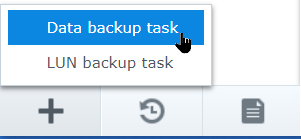

Backblaze S3 Backup), then click Next and Apply. Select the local directory or directories to backup and click Next.Įnter a Task name (ex. Screenshot from Backblaze B2 App Key page after you successfully create a new key If you've created a bucket-restricted key, make sure you've selected the option to "List All Bucket Names" as this is necessary for S3 integrations. Once the above fields are set properly, you should see all your Buckets under the field, "Bucket name". In the field labeled, "Signature Version", set v4. (See screenshot below.) With the exception of the S3 Endpoint, which is found in your Backblaze account's Buckets Page. In the field labeled, "Secret Key", set your B2 applicationKeyĪll of these fields can be found in your Backblaze account's App Keys page. In the field labeled, "Access Key", set your B2 keyID In the field labeled:"Server address", enter your "S3 Endpoint" In the field S3 Server, select "Custom Server URL" Launch Hyper Backup, and then click the plus (+) sign to create a new Data backup taskįor Backup Destination, scroll down to Cloud Service and select “S3 Storage”, then click Next. Synology’s Hyper Backup can be configured with B2 by following the steps below. Note: Hyper Backup version 2.2.5-1261 or later is required. You can store the backup data in local shared folders, remote servers, and public clouds, like Backblaze B2 with our new S3 API. Synology’s Hyper Backup allows users to back up various kinds of data (system configurations, shared folders, and applications/packages) on your Synology NAS, manually or by schedule.


 0 kommentar(er)
0 kommentar(er)
